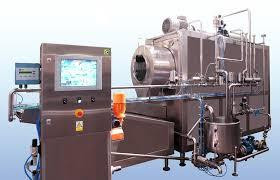Butter is made from the fat in milk by Butter Production Lines. It is a highly caloric product due to its high-fat content, which also provides significant vitamins A and D.
Butter is a widely consumed food that shows great versatility in the kitchen.
The butter is the product obtained from milk by mechanical means or by whipping cream pasteurized. The term butter designates only the product made with milk or cream from cow's milk.
How is butter made?
Butter production consists of several stages:
1st. The cream is separated from the milk (skimming). It can be done either by leaving the milk at rest for several hours or skimming machines designed for this purpose.
2nd. Then the cream will be transformed into Butter Silos through a series of operations. They include pasteurization of the cream, deodorizing it, eliminating compounds, subsequent refrigeration, and maturation.
3rd. The maturation of the cream is the last step in preparing cream and butter to make it one of the key processes. At this stage, the cream had no aroma after the processes to which it had been subjected and is inoculated with lactic acid bacteria. In industries, Butter Making Machines are in use extremely.
Types of butter
Different types of butter receive their name based on several criteria:
By its origin
Butter is called the product as such obtained from cow's milk or cream. Butter can be obtained from the milk of other animal species such as sheep, goat or buffalo. In this case, its name must refer to the species from which it comes. Sheep or goat butter has a lighter color and a higher fat content than that of the cow.
By the manufacturing process
- a) Sweet cream butter is produced from fresh cream matured without acidification. The sour cream butter is obtained from cream that has been matured with acidification.
- b) Whipped butter, into which air is blown during its production process, reaching a content of 30 percent air. This facilitates its smoothness or ability to spread, being a lighter butter, which melts better than ordinary butter.Butter Packing Machines pack this type of butter.
By its composition
- a) Light or low-calorie butter with a lower fat content than usual, with values between 41 and 65 g / 100 g.
- b) Butter with non-dairy ingredients added, for example, garlic, aromatic herbs, etc.
- c) Butter with salt or salted butter, to which sodium chloride (common salt) is added in its preparation.
Use in kitchen
Butter is a widely consumed food in many countries. Its ease of melting and spreading, as well as its delicate flavor and aroma, facilitate and extend its culinary uses. From the traditional bread and butter toast for breakfast to the sauces seasoned with aromatic herbs that accompany dishes with the most varied ingredients, butter shows great versatility.
It is widely used in confectionery, one of the most used ingredients in the preparation of cakes, pastries, etc. However, butter is not suitable for cooking at high temperatures.
Helpful tips
It is necessary to take care of conservation's ideal conditions to preserve its sensory qualities and nutritional value. Due to its fatty nature, butter can easily spoil if the storage conditions are not adequate. The main alterations are those caused by rancidity and oxidation of fat.
